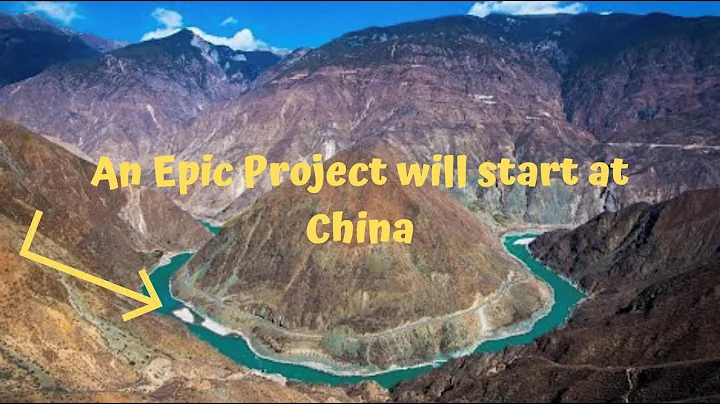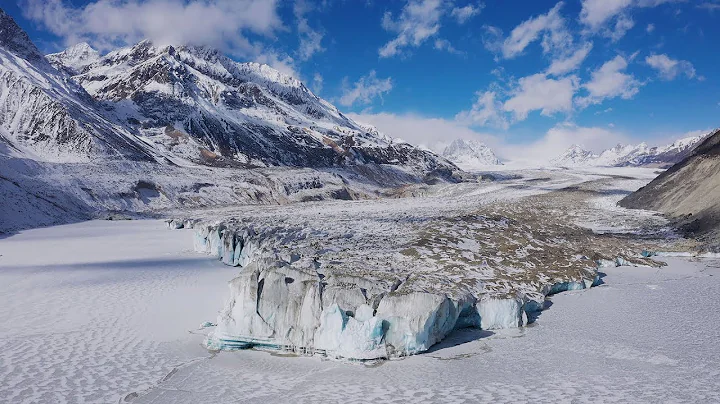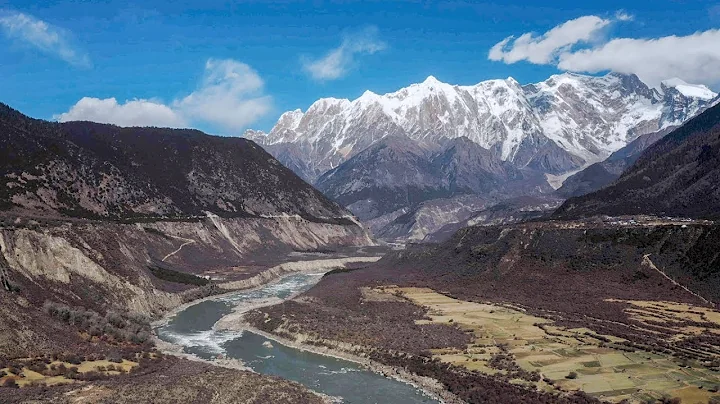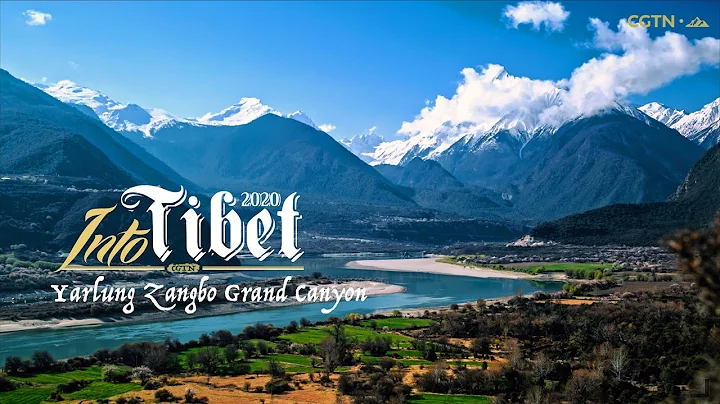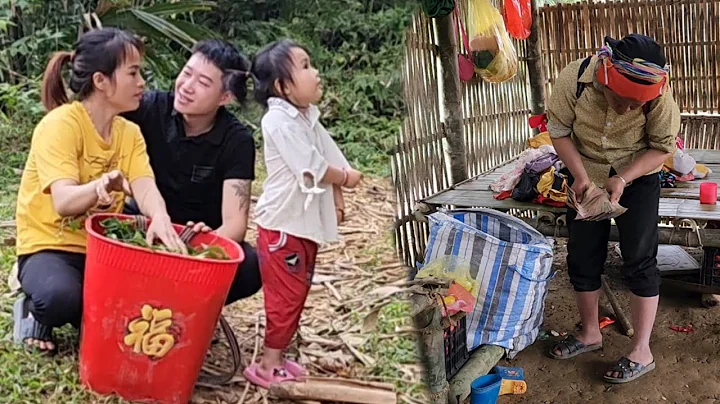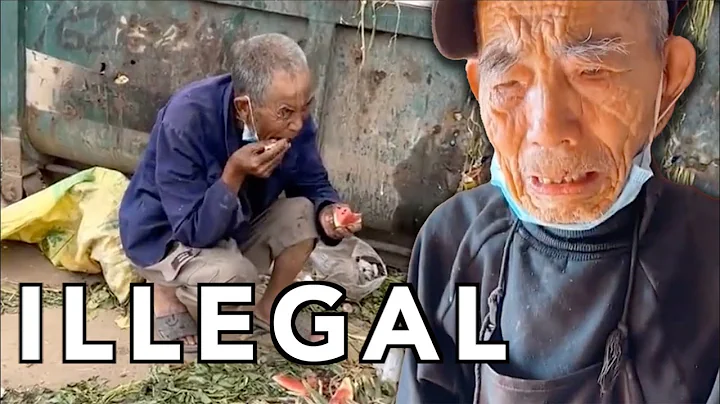

Yao Linglin and his colleagues were exploring water pipe laying lines on the cliff.

With the help of Tibet aid cadres, local Tibetan compatriots have access to clear tap water.

Yao Linglin


The optimized and upgraded landfill.
On June 14, a clear mountain spring water was introduced into the newly built water plant reservoir, and the raindrops falling from the sky caused ripples on the surface of the pool. "The joint management was successful day and night last night, and the water plant started trial operation, which will fundamentally change the water supply quality of the city of Bomi County." The staff of the Bomi County Water Plant immediately "broadcasted" the good news in the WeChat group .
Yao Linglin, deputy head of the Bomi County People's Government, who actively promotes the renovation and upgrading of water plants, is a member of the Bomi working group of the ninth batch of aid to Tibet team. He said that after the completion of the project, it will fully guarantee the daily life of cadres and people in the core area of Bomi County Production and domestic water will directly increase the water supply population by about 7,000 people and triple the water supply scale to meet the production and domestic water needs of Bomi County in the next 20 years.
Text/Guangzhou Daily all-media reporters Zhang Dan and Xiao Huanhuan
Pictures/Guangzhou Daily all-media reporters Wang Weixuan and Huang Hongbin
Villagers' memories:
When I was a child, I scooped up "cow dung water" on the roadside
It was June, as one of the main tributaries of the Brahmaputra River The Parlong Zangbo River flows through Bomi County, Linzhi City, Tibet. Coupled with the reputation of the "Land of Glaciers", it is difficult to imagine that Bomi County will also face the problem of "drinking water difficulty". In fact, "water outage", "insufficient water pressure", "water inlet channel collapse" and "water pipe burst" were the "normal conditions" faced by the people of Bomi County three years ago.
Not long after driving southwest from Bomi County, at the foot of Zhuolong Valley mountain and on the bank of the Palong Zangbo River, it is the location of the new water plant in Bomi County. The village where it is located is called Sangdeng Village.
Zhaxi Zedeng, who is nearly 50 years old, has lived in Sanden Village, Zhamu Town, Bomi County since he was a child. As the village director, Zhaxi Zedeng was concerned that the water flowing down the mountain in the past was mixed with horse dung, pig dung, and cow dung. The poop situation was impressive.
He told reporters that Sangden Village is a village near Bomi County, but when he was a child, he could only live and farm on the snow and rainwater flowing down from the mountains like other villagers. "At that time, the villagers took buckets to get water from the water flowing down the mountain. They scooped it up and scooped it out. The water was still very unclean, with pig dung and cow dung floating in the water."
He said that it might also be due to the water at that time. The problem is that villagers are always prone to getting sick and have to run to the hospital from time to time. Later, when the cadres of the Communist Party of China to Aid Tibet came to the county, they built a tap water plant. As people around the county, they also actively organized and contributed, and then tap water was used. "It is much better than the water scooped from the roadside." ”
As time goes by, many people in the village have become richer, and some have built two-story buildings, but the water pressure has never been high, and everyone can only get water on the first floor, and often. There will be water outages.
Long-term disrepair:
Water plant equipment is aging and water is often cut off
"I remember that around 1996, our county had its first water plant." Tsering Baden, director of the Bomi County Water Plant, recalled that the water plant was at that time It was also built by the first batch of cadres to aid Tibet. After 2000, the fourth batch of cadres to aid Tibet invested nearly 4 million yuan to renovate a water plant, build a new sedimentation tank and a sand settling tank, and lengthen it. About 3 kilometers of PVC pipes.
He told reporters that before the water plant was built, villages on the mountains or at the foot of the mountains used mountain spring water, while Bomi County used its own well water. "In the early days, the water plant could only provide water to the people in the county. It was difficult for the surrounding villages to supply water due to insufficient infrastructure." Tsering Baden said that before the construction of the new water plant, due to the aging of the equipment, it was often difficult to supply water. There would be situations such as "collapse of water inlets" and "burst of water pipes". Therefore, insufficient water pressure and water outages became the main problems faced at that time. Water was cut off almost two or three times within a week.
"Frequent water outages" and "no water supply above the third floor" were Yao Linglin's deepest impression when he first came to Bomi County. It was also something he didn't understand: guarding the Parong Zangbo River, with glaciers and snowy mountains at his back, he actually Will there still be water shortage? Through investigation, he learned that the earliest water plant in the county was transformed from a hydropower station. It was not until the 1990s that a new water plant was built. However, many years have passed and the equipment of the water plant has long been aged. As the population grows, the water supply cannot meet the current growth rate of the county's population. "At that time, the pipe network of the county water plant had covered the surrounding villages, but due to insufficient water sources, there were still two villages that had not yet used the water from the water plant."
The first item of the "14th Five-Year Plan" to aid Tibet:
Addressing the masses "Difficulty in drinking water"
"The first project of Bomi County's '14th Five-Year Plan' to aid Tibet is to build a new water plant to solve the people's problem of 'difficulty in drinking water'." Yao Linglin said.
At the working group's "14th Five-Year Plan" aid Tibet project establishment seminar, Zou Yonggang, leader of the Bomi working group, said: "To solve the problem of drinking water difficulties for cadres and the masses in Bomi County, we must be determined to actively strive for the aid to Tibet during the 14th Five-Year Plan Financial support must solve this key livelihood issue that restricts local economic and social development and people’s lives.”
In 2021, this project successfully became the first batch of projects in Guangdong’s aid to Tibet included in the “14th Five-Year Plan”. After
, Yao Linglin returned to Guangzhou and contacted Guangzhou Water Investment Group, and jointly organized a high-level expert technical service team that had participated in projects such as the "Guangdong-Hong Kong Water Supply Project" and "Xijiang Water Diversion" to go to Bomi for on-site investigation five times in three months. Guangzhou Water Investment and the Bomi County Housing and Urban-Rural Development Bureau team quickly carried out water quality testing, pipe network testing, geological exploration and other work, formulated a plan to improve rural water supply facilities in Bomi County according to local conditions, solved long-standing problems, and promoted the implementation of urban and rural water supply guarantee projects with high quality .
Invested nearly 30 million yuan to ensure water supply:
The new water plant embodies the unity of traditional culture and modern technology
Compared with other cadres who aided Tibet, Yao Linglin's complexion was tanned and shiny because his hometown was in Hunan. "These are all people who run out every day." Zou Yonggang explained with great pity. Due to physical reasons, Yao Linglin took leave on the day he finished the interview and returned to Guangzhou for treatment. After three years of aiding Tibet, many cadres aiding Tibet suffered from physical problems.
Behind the place where Yao Linglin was interviewed was the construction site in Sangdeng Village, Bomi County. Yao Linglin introduced that the new water plant project is called the "Bomi County Rural Water Supply Guarantee Project". The total cost of design, construction, equipment procurement and other costs is about 29.98 million yuan, which is provided by Guangdong's aid to Tibet funds. "The newly built water plant combines the local Peach Blossom Festival and water culture, and incorporates peach blossom and water drop elements in the form of roof greening and lawn landscape, showing the characteristics of water purification in the factory area and symbolizing a bright future." In addition, the architectural shape closely follows the style of the times, The roof is made of saffron red to reflect the local architectural characteristics. It also combines Lingnan architectural elements such as sunshade louvers and lattice windows to reflect the unity of traditional culture and modern technology.
It is understood that the original water supply facilities in Bomi County mainly include a water intake, raw water pipes and diversion canals, a water purification plant, with a daily water supply capacity of 3,000 cubic meters, and a total length of the water distribution pipe network of 35.6 kilometers.
Surveying water pipe laying lines: using hands and feet to cross a steep slope of more than 80 degrees
How to find a new water intake has become the primary issue before Yao Linglin and the project designers. After that, going to explore the pipeline from the water intake to the downstream has also become An unforgettable experience for Yao Linglin.
"The water intake had been found at that time, but due to heavy snowfall, it was not until March of the following year that we had the opportunity to survey the direction of the planned pipeline." Yao Linglin recalled that the water intake was in Zhuolong Valley, probably from 3900 It flows down the valley from a place of many meters to the county seat at an altitude of about 2,790 meters, with a drop of almost 1,100 meters and a distance of about 2.5 kilometers. He told reporters that it was such a short journey, and he walked for more than four hours in total. On the road, he saw landslides, trees washed away by mudslides, and some animal traps."There were no roads at that time, only water pipes erected along the valley terrain. Especially when passing through a steep slope, the water pipes were suspended."
Yao Linglin said frankly that when faced with crossing such a steep slope of more than 80 degrees, When he was next to a cliff, he felt really scared and even had the idea of "retreating". However, when he saw the director of the water plant leading the way and the local people behind him, he had no choice but to bite the bullet.
"Only by completely surveying the entire line can you have a clear understanding of the feasibility of the water plant construction plan." He said that at that time, that section of the road was about 70 or 80 meters away. It was dangerous, and he was a little scared and hesitant at first, but he thought that he must solve the problem of "difficulty in drinking water" for the local people as soon as possible, so he immediately plucked up the courage to climb over the wire rope and cross over.
Yao Linglin had previously fallen on wet moss, and his hand was cut by a sharp branch; once he slipped on the edge of a collapsed cliff, and he almost fell down a cliff dozens of meters high. "It is not easy to do projects in Tibet, and it is subject to many natural conditions."
The scale of water supply has been tripled to meet the county's water demand for the next 20 years.
On June 14, clear mountain spring water was introduced into the newly built water plant to store water. In the pool, the trial run started.
Yao Linglin told reporters that after the completion of the project, it will fully guarantee the daily production and living water of cadres and people in the core area of Bomi County, directly increase the water supply population by about 7,000 people, and increase the water supply scale from 3,000 cubic meters per day to 10,000 cubic meters per day, meeting the needs of Bomi County In the next 20 years, the demand for water for production and living will be developed; fully automated disinfection and filtration equipment will be invested to improve water quality under the premise of safe and economical operation; Tibet's first county tap water quality inspection center will be established to carry out daily water quality testing every day.
"After the water plant was built, we built a new pipeline from the water source to increase our water pressure." Tsering Baden said that this also fundamentally solved the problem of "poor water quality and many impurities." In addition, the water plant has also added an ultraviolet disinfection link.
“I am really grateful to the people of Guangdong.” Tsering Baden said emotionally.
"After the water plant is completed, we no longer have to worry about insufficient water pressure to go up to the second floor." Zhaxi Zedeng said that not only can we have 100% safe water, but we can even use water heaters. "It is much cleaner than the water scooped by the roadside."
predicts the "garbage siege" in advance:
Upgrading and Renovation of Landfills
Another project that Yao Linglin is thinking about is the renovation and upgrading of landfills. With the wave of With the development of Mi County, the amount of garbage every day is increasing, and it faces the risk of "garbage siege".
“When there was no upgrade, the wind blew, and yellow sand and garbage were floating everywhere around the landfill.” recalled Tashi, deputy director of the Bomi County Urban Management and Comprehensive Law Enforcement Bureau.
Zhaxi introduced that this is the only landfill in the county. Construction began in 2009 and was officially put into use in 2010. It adopts the method of earth filling and is expected to be used for 15 years; but with the continuous development of the county, Coupled with the need to process domestic waste at the construction site of the Sichuan-Tibet Railway project, the service life of the landfill continues to "shrink". According to the development rate, it will face the risk of "garbage siege" by 2023. "The daily processing capacity is planned to be about 30 tons, but now the daily garbage processing capacity is more than 40 tons." The renovation and upgrading of the
landfill is urgent, and problems such as heavy odor and garbage leakage need to be solved urgently. At the end of 2021, under the active promotion of Yao Linglin, Guangzhou Environmental Investment Group led a team to Tibet for investigation, and immediately started research. Through technical transformation and refined operations, the design was to fully tap the potential and release the landfill storage capacity, so as to ensure the collection of domestic waste in the Bomi area. Dispose of properly.
On March 8, 2022, the "Guangzhou Environmental Investment Group Counterpart Support Bomi County Waste Treatment Technical Service Launching Ceremony" was held at the Bomi County Landfill.On the same day, Guangzhou Environmental Investment Group held a landfill-related material donation ceremony at the county committee and county government, and officially launched Bomi County landfill operations and operational skills training, landfill rainwater and sewage diversion operations, landfill leachate treatment , Salesperson training such as garbage classification publicity.
The entire landfill process is covered and sealed:
can extend its service life by another four years.
On March 31 this year, when the last weld was completed, the Bomi County landfill became the first in the Tibet Autonomous Region to be covered and sealed with HDPE membrane throughout the entire process. landfill.
According to Yao Linglin, the entire landfill uses 1.0mm HDPE film (about 15,000 square meters) to replace clay, and the non-operation area is covered and sealed; 0.3mm PE film is used to cover the operation area daily, effectively isolating the entry of surface water. The garbage dump body has completely realized the diversion of rainwater and sewage; at the same time, open-hole PE pipes (about 600 meters) are welded in series and placed under the membrane. The landfill gas is collected centrally by fans and burned outside the reservoir area for disposal by torches. Effectively prevent and control the impact of odor.
In addition, HDPE membrane has the properties of efficient anti-seepage, high and low temperature resistance, anti-aging, corrosion resistance, and long service life. Bomi County's garbage treatment and landfill technology has been upgraded from the previous soil-covered landfill to film-covered landfill. The annual operating cost of the covering system has been reduced by 75%. At the same time, the production of leachate has been reduced, the utilization rate of storage capacity has been improved, and storage capacity has been saved by 15% to 25%. Extend the service life of the landfill, control odor spillage from the source, prevent garbage from scattering, and significantly reduce the impact on the surrounding environment.
"If you smell it, there is almost no strong smell now." Zhaxi told reporters that in addition to the odor problem, the problem of garbage flying everywhere has also been solved, and environmental protection requirements have also been met, especially the diversion of rainwater and sewage. , reducing leakage by 90%.
"Through the transformation and upgrading of the landfill, according to the current daily garbage disposal volume, the service life can be until 2026, which is four years longer than the original." Yao Linglin said, in addition, because the garbage treated with film has less impurities , when a waste incineration plant is built in the county in the future, the plastic-coated waste can be dug out for incineration, and the land used can also be restored and repaired.
